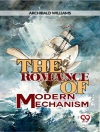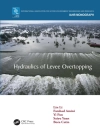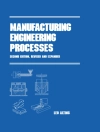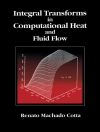This work presents a unified approach to the vibrations of elastic systems as applied to MEMS devices, mechanical components, and civil structures.
Applications include atomic force microscopes, energy harvesters, and carbon nanotubes and consider such complicating effects as squeeze film damping, viscous fluid loading, in-plane forces, and proof mass interactions with their elastic supports. These effects are analyzed as single degree-of-freedom models and as more realistic elastic structures. The governing equations and boundary conditions for beams, plates, and shells with interior and boundary attachments are derived by applying variational calculus to an expression describing the energy of the system. The advantages of this approach regarding the generation of orthogonal functions and the Rayleigh-Ritz method are demonstrated.
A large number of graphs and tables are given to show the impact of various factors on the systems’ natural frequencies, mode shapes, and responses.
Зміст
1 Introduction.- 1.1 A Brief Historical Perspective.- 1.2 Importance of Vibrations.- 1.3 Analysis of Vibrating Systems.- 1.4 About the Book.- 2 Spring-Mass Systems.- 2.1 Introduction.- 2.2 Some Preliminaries.- 2.2.1 A Brief Review of Single Degree-of-Freedom Systems.- 2.2.2 General Solution: Harmonically Varying Forcing.- 2.2.3 Power Dissipated by a Viscous Damper.- 2.2.4 Structural Damping.- 2.3 Squeeze Film Air Damping.- 2.3.1 Introduction.- 2.3.2 Rectangular Plates.- 2.3.3 Circular Plates.- 2.3.4 Base Excitation with Squeeze Film Damping.- 2.3.5 Time-Varying Force Excitation of the Mass.- 2.4 Viscous Fluid Damping.- 2.4.1 Introduction.- 2.4.2 Single Degree-of-Freedom System in a Viscous Fluid.- 2.5 Electrostatic and van der Waals Attraction.- 2.5.1 Introduction.- 2.5.2 Single Degree-of-Freedom with Electrostatic Attraction.- 2.5.3 van der Waals Attraction and Atomic Force Microscopy.- 2.6 Energy Harvesters.- 2.6.1 Introduction.- 2.6.2 Piezoelectric Generator.- 2.6.3 Maximum Average Power of a Piezoelectric Generator.- 2.6.4 Permanent Magnet Generator.- 2.6.5 Maximum Average Power of a Permanent Magnet Generator.- 2.7 Two Degree-of-Freedom Systems.- 2.7.1 Introduction.- 2.7.2 Harmonic Excitation: Natural Frequencies and Frequency Response Functions.- 2.7.3 Enhanced Energy Harvester.- 2.7.4 MEMS Filters.- 2.7.5 Time-Domain Response.- 2.7.6 Design of an Atomic Force Microscope Motion Scanner.- Appendix 2.1 Forces on a Submerged Vibrating Cylinder.- 3 Thin Beams: Part I .- 3.1 Introduction.- 3.2 Derivation of Governing Equation and Boundary Conditions.- 3.2.1 Contributions to the Total Energy.- 3.2.2 Governing Equation.- 3.2.3 Boundary Conditions.- 3.2.4 Non Dimensional Form of the Governing Equation and Boundary Conditions.- 3.3 Natural Frequencies and Mode Shapes of Beams with Constant Cross Section and with Attachments.- 3.3.1 Introduction.- 3.3.2 Solution for Very General Boundary Conditions .- 3.3.3 General Solution in the Absence of an Axial Force and an Elastic Foundation.- 3.3.4 Numerical Results.- 3.3.5 Cantilever Beam as a Biosensor.- 3.4 Single Degree-of-Freedom Approximation of Beams with a Concentrated Mass.- 3.5 Beams with In-Span Spring-Mass Systems .- 3.5.1 Single Degree-of-Freedom System.- 3.5.2 Two Degree-of-Freedom System with Translation and Rotation.- 3.6 Effects of an Axial Force and an Elastic Foundation on the Natural Frequency.- 3.7 Beams with a Rigid Extended Mass.- 3.7.1 Introduction.- 3.7.2 Cantilever Beam with a Rigid Extended Mass.- 3.7.3 Beam with an In-span Rigid Extended Mass.- 3.8 Beams with Variable Cross Section.- 3.8.1 Introduction.- 3.8.2 Continuously Changing Cross Section.- 3.8.3 Linear Taper.- 3.8.4 Exponential Taper.- 3.8.5 Approximate Solution to Tapered Beams: Rayleigh-Ritz Method.- 3.8.6 Triangular Taper: Application to Atomic Force Microscopy.- 3.8.7 Constant Cross Section with a Step Change in Properties.- 3.8.8 Stepped Beam with an In-Span Rigid Support.- 3.9 Elastically Connected Beams.- 3.9.1 Introduction.- 3.9.2 Beams Connected by a Continuous Elastic Spring.- 3.9.3 Beams with Concentrated Masses Connected by an Elastic Spring.- 3.10 Forced Excitation.- 3.10.1 Boundary Conditions and the Generation of Orthogonal Functions.- 3.10.2 General Solution.- 3.10.3 Impulse Response.- 3.10.4 Time-Dependent Boundary Excitation.- 3.10.5 Forced Harmonic Oscillations.- 3.10.6 Harmonic Boundary Excitation.- 4 Thin Beams: Part II .- 4.1 Introduction.- 4.2 Damping.- 4.2.1 Generation of Governing Equation.- 4.2.2 General Solution.- 4.2.3 Illustration of the Effects of Various Types of Damping: Cantilever Beam.- 4.3 In-plane Forces and Electrostatic Attraction.- 4.3.1 Introduction.- 4.3.2 Beam Subjected to a Constant Axial Force.- 4.3.3 Beam Subject to In-plane Forces and Electrostatic Attraction.- 4.4 Piezoelectric Energy Harvesters.- 4.4.1 Governing Equations and Boundary Conditions.- 4.4.2 Power from the Harmonic Oscillations of a Base-Excited Cantilever Beam.- Appendix 4.1 Hydrodynamic Correction Function.- 5 Timoshenko Beams.- 5.1 Introduction.- 5.2 Derivation of the Governing Equations and Boundary Conditions.- 5.2.1 Introduction.- 5.2.2 Contributions to the Total Energy.- 5.2.3 Governing Equations.- 5.2.4 Boundary Conditions.- 5.2.5 Non Dimensional Form of the Governing Equationsand Boundary Conditions.- 5.2.6 Reduction of Timoshenko Equations to That of Euler-Bernoulli.- 5.3 Natural Frequencies and Mode Shapes of Beams with Constant Cross Section, Elastic Foundation, Axial Force and In-span Attachments.- 5.3.1 Introduction.- 5.3.2 Solution for Very General Boundary Conditions.- 5.3.3 Special Cases.- 5.3.4 Numerical Results.- 5.4 Natural Frequencies of Beams with Variable Cross Section.- 5.4.1 Beams with a Continuous Taper: Rayleigh-Ritz Method.- 5.4.2 Constant Cross Section with a Step Change in Properties.- 5.4.3 Numerical Results.- 5.5 Beams Connected by a Continuous Elastic Spring.- 5.6 Forced Excitation.- 5.6.1 Boundary Conditions and the Generation of Orthogonal Functions.- 5.6.2 General Solution.- 5.6.3 Impulse Response.- Appendix 5.1 Definitions of the Solution Functions fl and gl and Their Derivatives .- Appendix 5.2 Definitions of the Solution Functions fli and gli and Their Derivatives.- 6 Thin Plates.- 6.1 Introduction.- 6.2 Derivation of Governing Equation and Boundary Conditions: Rectangular Plates.- 6.2.1 Introduction.- 6.2.2 Contributions to the Total Energy.- 6.2.3 Governing Equation.- 6.2.4 Boundary Conditions.- 6.2.5 Non Dimensional Form of the Governing Equation and Boundary Conditions.- 6.3 Governing Equations and Boundary Conditions: Circular Plates.- 6.4 Natural Frequencies and Mode Shapes of Circular Plates for Very General Boundary Conditions.- 6.4.1 Introduction.- 6.4.2 Natural Frequencies and Mode Shapes of Annular and Solid Circular Plates.- 6.4.3Numerical Results.- 6.5 Natural Frequencies and Mode Shapes of Rectangular and Square Plates: Rayleigh-Ritz Method.- 6.5.1 Introduction.- 6.5.2 Natural Frequencies and Mode Shapes of Rectangular and Square Plates.- 6.5.3 Numerical Results.- 6.5.4 Comparison with Thin Beams.- 6.6 Forced Excitation of Circular Plates.- 6.6.1 General Solution to the Forced Excitation of Circular Plates.- 6.6.2 Impulse Response of a Solid Circular Plate.- 6.7 Circular Plate with Concentrated Mass Revisited.- 6.8 Extensional Vibrations of Plates.- 6.8.1 Introduction.- 6.8.2 Contributions to the Total Energy.- 6.8.3 Governing Equations and Boundary Conditions.- 6.8.4 Natural Frequencies and Mode Shapes of a Circular Plate.- 6.8.5 Numerical Results.- Appendix 6.1 Elements of Matrices in Eq. (6.100).- 7 Cylindrical Shells and Carbon Nanotube Approximations .- 7.1 Introduction.- 7.2 Derivation of Governing Equations and Boundary Conditions: Flügge’s Theory.- 7.2.1 Introduction.- 7.2.2 Contributions to the Total Energy.- 7.2.3 Governing Equations.- 7.2.4 Boundary Conditions.- 7.2.5 Boundary Conditions and the Generation of Orthogonal Functions.- 7.3 Derivation of Governing Equations and Boundary Conditions: Donnell’s Theory.- 7.3.1 Introduction.- 7.3.2 Contributions to the Total Energy.- 7.3.3 Governing Equations 7.3.4 Boundary Conditions.- 7.4 Natural Frequencies of Clamped and Cantilever Shells: Single-Wall Carbon Nanotube Approximations.- 7.4.1 Rayleigh-Ritz Solution.- 7.4.2 Numerical Results.- 7.5Natural Frequencies of Hinged Shells: Double-Wall Carbon Nanotube Approximation.- Appendix A Strain Energy in Linear Elastic Bodies .- Appendix B Variational Calculus: Generation of Governing Equations, Boundary Conditions, and Orthogonal Functions.- B.1 Variational Calculus.- B.1.1 System with One Dependent Variable.- B.1.2 A Special Case for Systems with One Dependent Variable.- B.1.3 Systems with N Dependent Variables.- B.1.4 A Special Case for Systems with N Dependent Variables.- B.2 Orthogonal Functions.- B.2.1 Systems with One Dependent Variable.- B.2.2 Systems with N Dependent Variables.- B.3 Application of Results to Specific Elastic Systems.- Appendix C Laplace Transforms and the Solutions to Ordinary Differential Equations.- C.1 Definition of the Laplace Transform .- C.2 Solution to Second-Order Equation.- C.3 Solution to Fourth-Order Equation.- C.4 Table of Laplace Transform Pairs.












